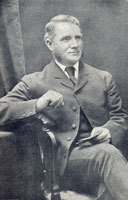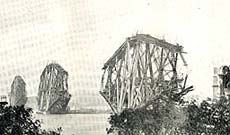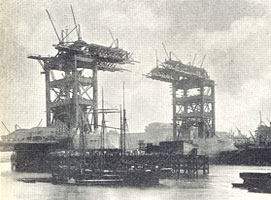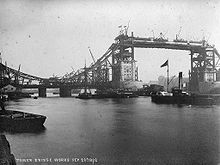Member Login
Free Search
Enter First Name, Last Name or Full Name and click Search,or click on the Advanced Search link for more options
Famous Scots - William Arrol Sir





Sir William Arrol builder of the Forth Bridge
The builder of the great Forth Bridge, and senior partner in Dalmarnock Iron Works, was the son of a cotton-spinner who became manager of the mill of Messrs. J. & P. Coats in Paisley. He was born at Houston in 1839, and began work when nine years of age in Johnstone cotton mill. This work, however, showed little prospect of advancement, so, at the age of fourteen, he bound himself apprentice to a Paisley blacksmith. At the end of his "time" he worked in various towns of England and Scotland to improve his knowledge, and at the age of twenty-four became foreman in the boiler works of Messrs. Laidlaw & Sons, Glasgow. There he was entrusted with the carrying out of important contracts. Five years later he began business for himself in Bridgeton, and in 1871, having taken to bridge building, he founded Dalmarnock Iron Works.
One of his first important tasks was the building of the Caledonian Railway Company's bridge over the Clyde at Bothwell. There he put into practice his idea of building the bridge on land, and then rolling it out over the water. Formerly bridges were rivetted piece to piece in their place. A little later he had the building of the great Caledonian bridge over the Clyde at the Broomielaw, and for that work he devised a new mechanical driller which saved immense labour.
Another of his many inventions was a hydraulic rivetter which does better work than the old hand labour. And indeed no difficulty has ever arisen in his work which he was not able to overcome by some new resource. He had undertaken the contract to build the suspension bridge planned by Sir Thomas Bond to span the Forth, and had spent some thousands of pounds on preparatory works when, in 1879, that engineer's Tay Bridge collapsed with fearful loss of life. Fresh plans were made for both structures. Sir William Arrol was entrusted with the building of them, and they stand to-day for monuments of his skill and courage.
At the opening of the great Forth viaduct on 4th March, 1890, the Prince of Wales, (who became His Majesty King Edward), intimated that Queen Victoria intended to confer the honour of knighthood on the builder. Since then Sir William has built the great Tower Bridge across the Thames, and many another mighty viaduct. In 1895 he was induced to adventure upon politics, and was elected for South Ayrshire as a Liberal Unionist. In the House of Commons as elsewhere he took his duties seriously, as one of his latest appearances, which attracted much attention went to prove. His first wife, Elizabeth Paterson. being for some years dead, he married again in 1905. The marriage took place in Scotland, and on the same night an important division took place at the House. Most men would have held themselves excused in the circumstances, but Sir William was present, and counted for his party in the division.
For this sacrifice to duty he was made the recipient of a presentation by his fellow members at Westminster. Sir William built for himself the beautiful house of Seafield at Ayr, where he retired to enjoy the many academic and other honours which have come to him.
Headstone Photograph

Further Information
Title: SIR
Firstname: WILLIAM
LastName: ARROL
Date of Death: 20th Feb 1912
Age at Death: 74
Cemetery: Woodside Cemetery
Broomlands Street
Town: Paisley
Region: Glasgow and Clyde Valley
Country: Scotland
Please Note, the marker on this map indicates the Cemetery location, not the location of a particular grave.



